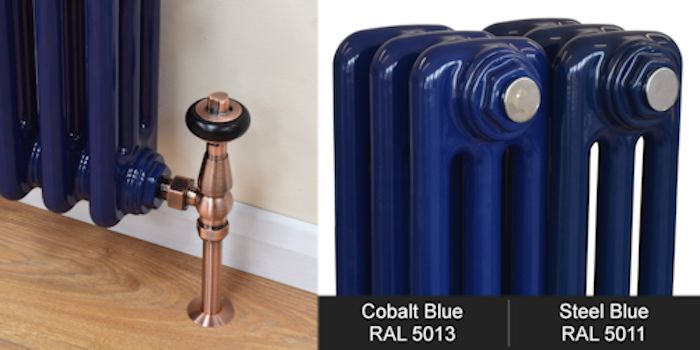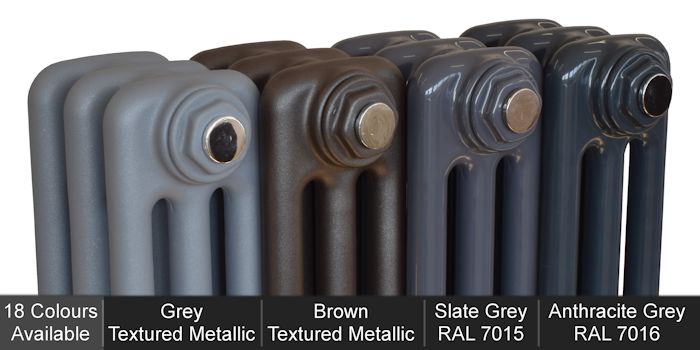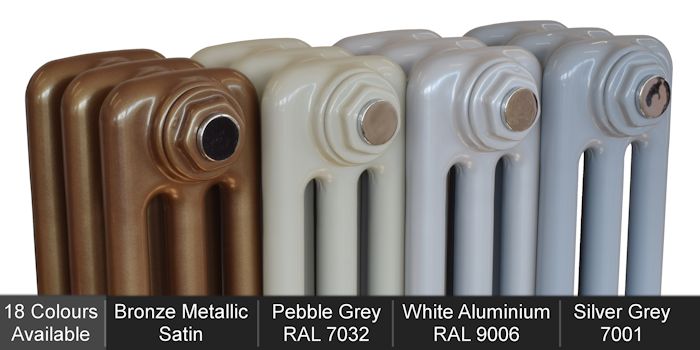Buyers Guides & Videos
Column Radiator Buying Guide
What is a column radiator?
In it’s simplest form, a column radiator is a well engineered, design classic, made to heat your home. This beautiful radiator design was created in the mid 60’s and is probably more popular now than ever before.
Columns - the term column refers to the vertical tubes that connect the top and bottom of each individual section of the radiator. The number of columns is what determines the depth of the radiator from the wall out into the room. Column radiators come in a variety of depths, the most popular being three, two and fours columns, in that order. Additionally, five and six column radiators are available where high heat output is required and space allows.
Sections - each section is joined together making the radiator grow in length. The minimum number of sections available is 3, which would only be approximately 160mm long. The largest number of sections we’ve joined to date is 50, which created a column radiator well over 2m in length. There are two methods of joining the sections, they are either welded together or joined using a nipple and gasket system. Both methods are well proven, popular and reliable.
Material
The radiators are manufactured from mild steel. They are protected from corrosion externally by the powder coated paint finish or in the case of bare metal column radiators, a clear lacquer top coat is applied. Internally your radiators and central heating system is protected by inhibitors that are added to the system when it is filled initially and during regular maintenance. We have seen the introduction of a couple of aluminium column radiator designs in the past couple of years but as yet these are far too expensive and the style is not as appealing as the original tubular steel radiator design.
Mounting
There are three main ways to mount your column radiator; wall mounted, support feet with top retaining stay or free standing fixed foot.
Wall Mounting - as standard we supply these radiators with wall mounting brackets. Most are European made, have a bracket that clamps onto the back tube, which then nests into the wall fixing. Chinese made radiators generally have a simple hook bracket that is not as well hidden or aesthetically pleasing. For clarity we aim to provide an image of wall mounting brackets for each radiator range on the page where you purchase that radiator.
Support Feet - the second most popular mounting method is to use a cast support foot. These are often used with particularly large or heavy radiators, or where installers are concerned about the strength and quality of the wall that the brackets are being attached to. The cast radiator foot is sometimes used to help create a more traditional style, as they were originally used on cast iron radiators.
Free Standing Feet - traditionally these were always welded to sections, but in the past five years most manufacturers have switched to slip-on feet. These are just as effective, as the feet can be secured directly to the floor with screws or bolts. However, if you require welded feet for additional strength and security, please call as we can supply these by special order.
Finish & Colour
Manufactured from steel tubing column radiators are generally finished with a powder coat paint treatment. Powder coating is a tough and durable surface finish that offers excellent heat resistance, corrosion resistance & high colour retention, giving you a long lasting, attractive smooth surface. Gloss white is the most popular finish, but with the growing popularity of anthracite, grey and black column radiators in gloss, satin and also lightly textured surfaces.
These can be viewed and touched in our Portsmouth showroom, along with a selection of colourful finishes, from subtle vintage greens to vibrant reds and blues. Ultimately, we can probably produce you a radiator in any colour you can think of. We even have bare metal column radiators available, that show off the detail of the manufacturing process. Bare or raw metal radiators are coated in a clear lacquer to protect them from corrosion, and they look amazing against brick walls and retro industrial style or in warehouse loft apartments.
What size column radiator do I need?
The primary factors that will determine the size of radiators you install are the heat output you require and the physical space available to place the radiator in the room. You can always install two radiators in a room if required, as this might prove better for heat distribution, practicality and aesthetics, as opposed to one large radiator. We have seen a large increase in the sales of vertical column radiators in the past few years, as more homes use bi-fold doors that take up a lot of wall space, where traditionally a radiator would have sat underneath a window.
Calculating Radiator Heat Output Requirements - We are here to help, so please call us if you struggle with your heat requirements. Often your installer will provide you with the heat requirements for each room, if so please check if these are in Delta T50 or Delta T60, so we can find you the ideal radiator. If your installer has not told you the heat requirements, we are happy to calculate this for you. You can call or email our knowledgeable and experienced sales team, who'll be happy to help. For each room they’ll want to know:
- What is the type of room? Kitchen, lounge, bedroom, hallway, conservatory...
- Room height, length and width
- Windows - single or double glazed
- Are the external walls of the room sheltered, average or exposed
Check out our new BTU Calculator where you can create, save and email your rooms and select the most suitable radiators using the calculated BTU's.
Pipe Centres
The pipe centres describe the distance between flow and return pipes. These are the pipes feeding into your radiator valves. Plumbers and builders often need to know the dimensions early on in a project, to get the pipe work into roughly the right location. We can provide dimension for the roughing-in of pipe work, however we strongly recommend that you wait until the radiators are on-site before fixing the final pipe work or laying any finished coverings. The reason for this is that there are too many variables, from the tolerance between each section length, to how much PTFE tape the installer might use when connecting the valves to the radiator.
Accessories
It's important not to forget the accessories you might want or need to complete the installation or the look you desire.
Mounting Bracket or Feet
From us, wall mounting brackets are included as standard, we’ve covered this area in the floor support options above in this article.Radiator Valves
We have a wide selection to offer and if you need help please call us. First you’ll need to decide on a modern or traditional style. Secondly, you’ll need to choose between manual or TRV (thermostatically controlled) which give you a more balanced room temperature and are more energy efficient. And thirdly, you need to know which direction your pipes will come from to choose between straight, corner or angled radiator valves, as a rough guide…- Straight valves - are used where pipes run along the wall
- Corner valves - are used where pipes come out of the wall directly into the back of the valves
- Angled valves - are used where pipes come up from the floor into the bottom of the valves
Sleeve Kits
Also known as pipe shrouds, these are metal tubes that slide over your inlet pipes giving a neat finish between the finished floor and the radiator valve. These are supplied in a finish to match your radiator valves. They come with a matching floor plates or escutcheon, that holds the tube in place and neatly covers any rough edges where the pipe work enters the floor or wall.Wall Stays
Also popular are our luxury wall stays. Again supplied in a matching finish to the valves and sleeve kits, these are used to secure the radiator to the wall for safety and prevent the radiator from being tipped over. Whilst not essential (as we supply standard steel wall stays with each radiator) the luxury wall stay is popular as a finishing touch and where the wall adjacent to the radiator is not solid. The luxury wall stays are more versatile when it comes to using alternative fixings.









